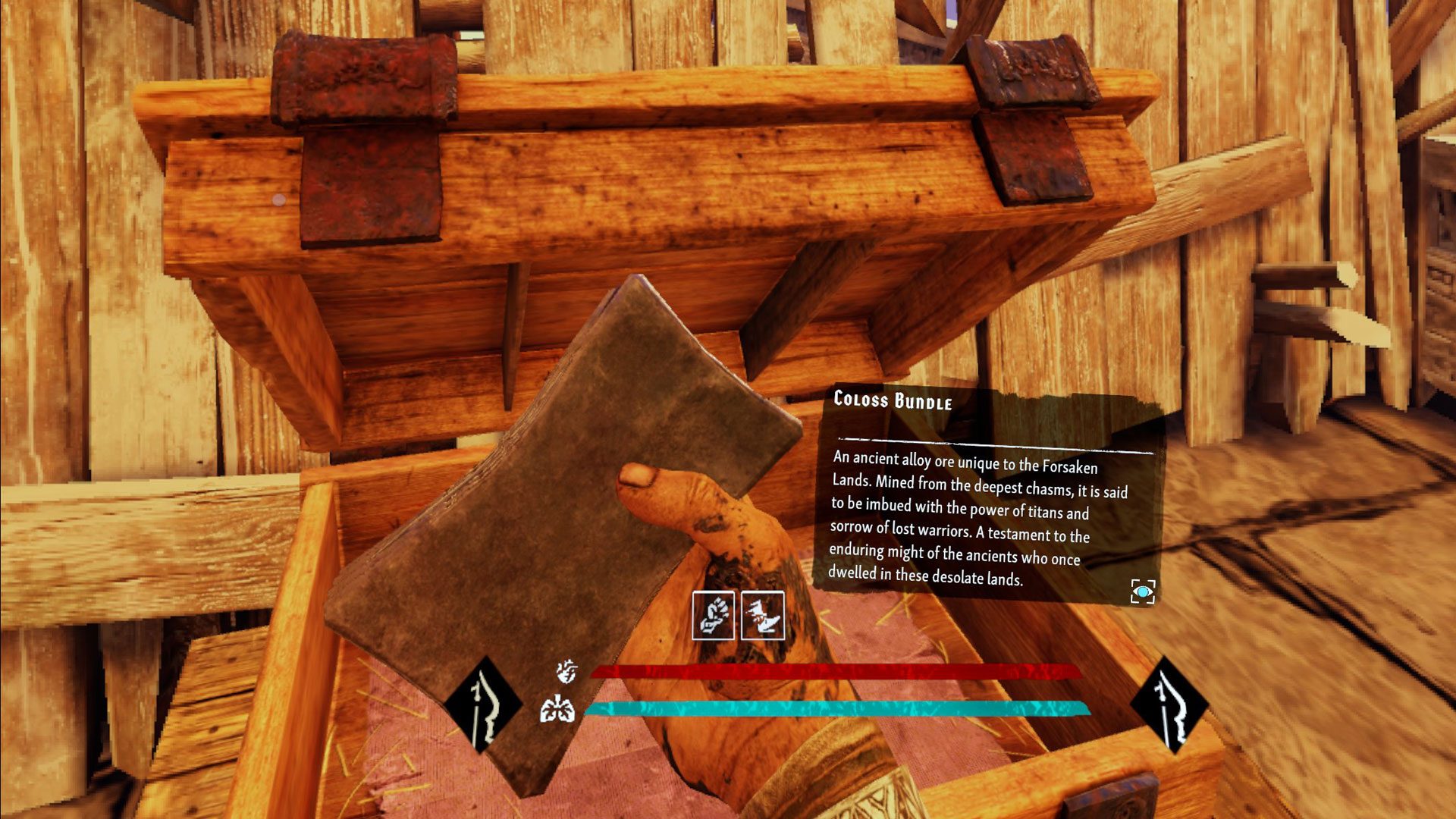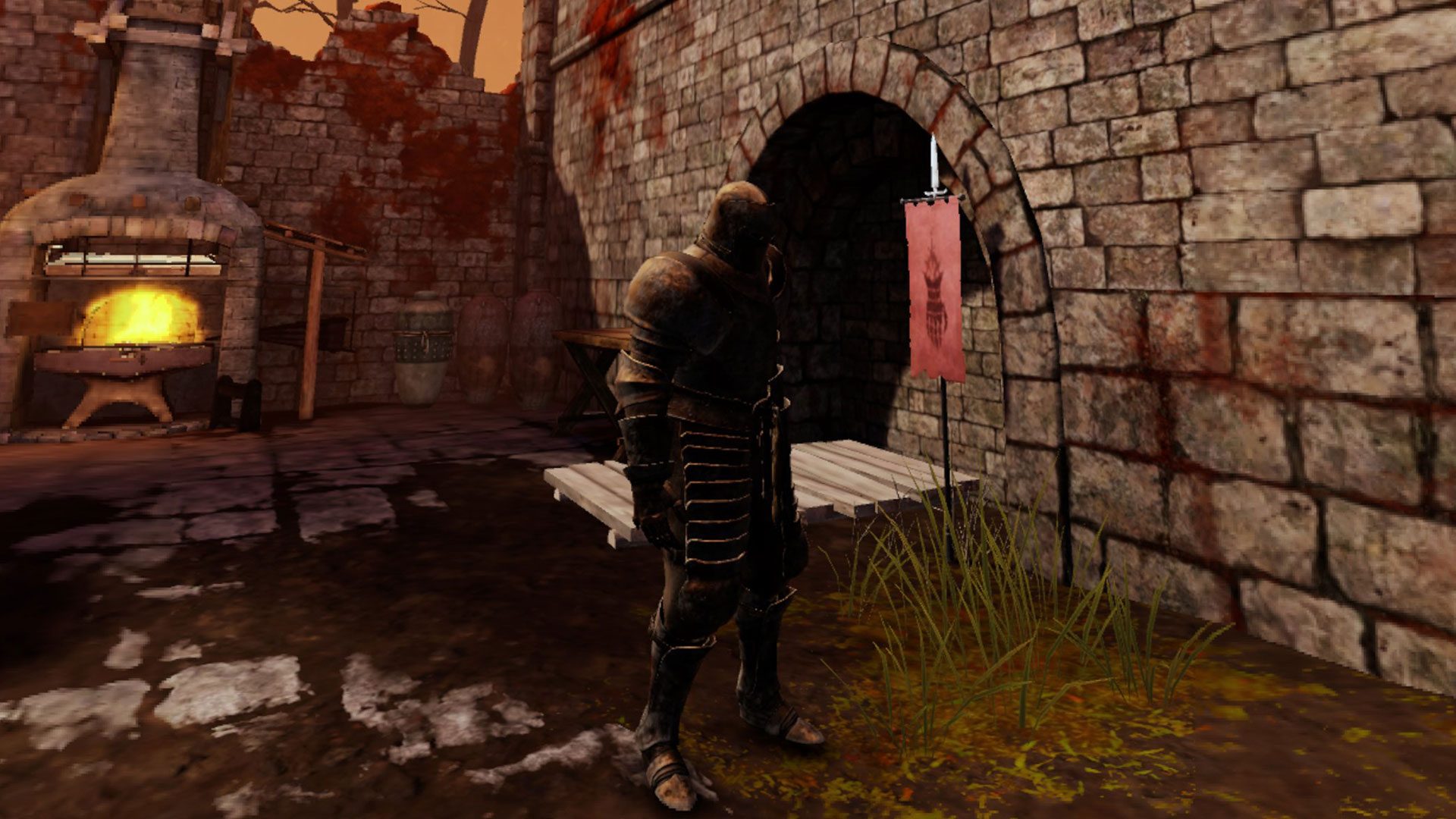Skydance’s Behemoth showcases a lot of hard-won lessons in VR design, which is mostly thanks to the studio’s pioneering work on its most successful VR game to date: The Walking Dead: Saints & Sinners (2020). As an original IP in the action-adventure genre, Behemoth goes in a pretty familiar direction when it comes to the game’s narrative, which would otherwise make it difficult to stand out in the crowd were it a standard video game. In VR though, there are precious few that provide such a monster-sized offering, and do it in a way that feels oh-so-satisfying.
Skydance’s Behemoth Details:
Developer: Skydance Games
Available On: Quest 2/3/Pro, PSVR 2, Meta PC (cross-buy with Quest) (coming to SteamVR)
Reviewed On: Quest 3
Release Date: December 5th, 2024
Price: $40
Gameplay
Much like Studio Ghibli’s Princess Mononoke (1997), in Behemoth you take on the role of an afflicted villager (Wren) marked with a rapidly progressing curse that will soon turn you into a mindless belligerent. It’s a double-edged sword: the curse means certain doom, but it also gives you superhuman powers to move faster, slice harder, and punch the ever-living shit out of everything—all of it in service of finding out the source of the evil that has felled a once mighty kingdom, and putting a stop to it yourself.

Using the curse to your advantage—and making you feel suitably bad ass in the process— you make your way through crumbling castle keeps and winding pathways filled with a variety of afflicted enemies who have unwittingly vowed to serve whatever dark forces govern the fallen world, which just so happens to have a few very nasty Troll-like giants wreaking havoc. More on those in a bit.
Behemoth is a physics-based combat game with a heavy emphasis on melee, so as you’d expect, the strike and parry system isn’t overly burdened with artificial moments to slice at baddies, giving you a good measure of creativity in how to approach situations.
Parrying simply requires you to hold up a sword in the direction of an enemy strike, which leaves your foes open to greater damage as they reel back. Smashing wildly and dashing around can quickly deplete your auto-regen stamina bar though, making every one of the game’s mid-level baddies worthy of your undivided attention, as they all have different weapons and combat styles. Some are fast, some have unblockable moves, so you have to stay on your toes, making it feel like a finely balanced act of managing your super strength, your dashing ability, and keeping attacks from landing on all sides.
There are a few shortcuts to making encounters easier though, chief of which is using your super human strength to smash through armor and kill multiple low-level baddies in a single blow. I didn’t use it in the clip above because it was cooling down from a previous bum-rush, although it lets you deal a lot more damage, and as you upgrade it, move faster and even extend it with chain kills.
The second half of the game almost exclusively features armored enemies, requiring you to rely more heavily on your strength, and use the three legendary weapons dolled out throughout the game, including a two-handed sword, a bow with auto-regen arrows, and an armor-breaking axe—all of them upgradable at conveniently placed forges using the game’s sole upgrade currency that you can loot from chests, Coloss Alloy.
Upgrading weapons at the forge is the only crafting portion of the game, which feels like a missed opportunity given the number of collectable (and non-storable) medicinal plants around, which give you only a tiny fraction of health when eaten on the spot. Maybe the studio planned a potions table that was scrapped? As it is, the medicinal herbs are pretty useless, although you’ll find plenty of health potions to loot from the pile of dead dudes you’re sure to leave in your path.
Outside of the small-ish upgrade tree available for your legendary weapons and super strength ability, that’s it for a big portion of the main gameplay loop. In between though, you’ll encounter environmental puzzles, which range from quick and easy to long and easy, as well as a variety of mini-bosses, which usually precede the stars of the show: the Behemoths.
As much as I like slicing dudes in half in fun and interesting ways, what I’m really here for is the game’s namesake, of which there are only four in the entire game. Although I wish there were more, I’m pretty satisfied with the difficulty ramp though, as Behemoths basically put all of your increasingly refined skills to the test: shooting, slicing, climbing, grappling, dashing, everything—making for epic multi-stage encounters that can equally flummox you on how to approach. How do you kill something the size of a skyscraper, anyway?
There’s really no leeway on how to tackle Behemoths, as you also have a witch-like companion in your head driving you forward, and consequently also spelling out the steps as they happen. That doesn’t make it any easier though, as you’ll need to strike at weak points scattered all around the giant beast, forcing you to climb up their legs through winding pathways and grapple your way up to clearly marked grapple points. Behemoths are cool, and I want more of them.
I could go into the full gamut of extras on display in Behemoth—collectibles are meh, found notes offer interesting bits of backstory, inventory is holster-based and works very well, and so on. But here’s the gist: everything works as well as you’d expect from the seasoned studio that smashed it out of the park with Saints & Sinners, although the only real weak point for me is the story, which feels a just little too predictable to be truly engaging.
Difficulty is also quite high. Even on its easy ‘Tenderfoot’ mode, Behemoths and mini-bosses are far from easy, requiring multiple tries to fully grok attack patterns and their unique weaknesses.
That said, across my nine hours defeating the game’s campaign, I noticed very little chaff on the stalk. Almost everything, save a few rando non-essential items scattered on tables, has a defined purpose. Every narrative encounter is important (if not a little too predictable). Every weapon upgrade is powerful enough to make me want to search through levels for chests for the precious Coloss Alloy, and smash every urn to find health potions or Coloss shards, five of which equals one Alloy.

While Behemoth presents you with the possibility to retread older levels via fast travel to find secret areas, it’s not relying on recycling anything, which is such a relief.
Immersion
As voiced protagonists go, I actually don’t hate Wren—or the witchy companion in his head, who definitely has ulterior motives. Neither tend to butt into puzzles or combat encounters, leaving you to experience the game’s non-narrative bits almost entirely in peace. I absolutely hate the ‘helpful robot’ trope that many action-adventure games fall into, probably because it’s just easier to tell people what to do than to build a game that lets you figure it out on your own. With effectively two voices in my head, there was a real opportunity for Behemoth to screw up twice as much in that respect, but it doesn’t. Here, Behemoth has my heart, but maybe not my mind.

Voice acting is a minor sticking point for me when it comes to immersion. It’s competent, but one of the main characters (there are only two besides yourself) feels way too melodramatic and commercial, which plays as an odd contrast to the gritty, fallen world of broken castle and dank crypts. I’m intentionally not revealing plot points here, but one of them is annoyingly plastic-feeling.
The story itself is also a bit weak, which is a shame. The narrative offers more than filler, but less than you’d expect from a game that absolutely nails the visual aesthetic, immersive interactions, physics-based combat—hell, it even runs so well on Quest 3, you’d almost expect it to be a PC VR game given the visual panache and well-realized textures on display.
While Behemoth does fall into well-trodden tropes of predictable twists and an end-game duel that I feel like I’ve played a dozen times already, all of it’s ameliorated by the game’s fun and satisfying combat, and dynamic grappling locomotion method, which was always used to its fullest in boss battles.
My other (much lesser) gripe is with AI enemies. While not nearly as frangible as the zombies in Saints & Sinners, they can feel a little too artificial at times. The overall gamey-ness of larger arena levels also feels on the predictable side. Gates close in obvious arenas for whatever reason, and reopen when the arbitrary number of bad guys stop spawning from the edges of the map.
That said, the Behemoth’s package as a whole is impressive, dull points and predictable tropes and all. I never felt too beleaguered by the story, and there was always a good reason to continue, as the game presents a wide variety of levels to tackle and interesting set pieces of lumbering Behemoths, teasing the encounters yet to come. Smashing through walls is also stupid fun.
In all, if I handed a Quest 3 to you even five years ago with Behemoth loaded up, it would be hard not to be impressed at the strides developers have been able to eke out of mobile hardware.
Comfort
As you would expect, Behemoth is a pretty physical game, although it equally supports seated or standing play, which may help you eke out a long play session without fatigue. Two-handed interactions are a constant, so make sure to clear some space however you play, because you’ll need to swing big, and swing hard.
Standard VR locomotion options (no teleport) are also here, catering to hardcore smooth-turners and snap-turners alike, both of which are variable strength, and provide variable sizes of vignettes. A fine snowy particle field also gently envelopes your view, giving you constant point of reference as you dash through levels at full clip, acting as a barely noticeable cockpit of sorts.
I only got that odd lurch in my stomach from a single elevator ride that was a little too wobbly for my liking, otherwise Behemoth offers a very comfortable experience throughout.
Skydance’s Behemoth Comfort Settings – December 5th, 2024 |
|
Turning |
|
| Artificial turning | |
| Snap-turn | ✔ |
| Quick-turn | ✖ |
| Smooth-turn | ✔ |
Movement |
|
| Artificial movement | |
| Teleport-move | ✖ |
| Dash-move | ✔ |
| Smooth-move | ✔ |
| Blinders | ✔ |
| Head-based | ✔ |
| Controller-based | ✖ |
| Swappable movement hand | ✖ |
Posture |
|
| Standing mode | ✔ |
| Seated mode | ✔ |
| Artificial crouch | ✔ |
| Real crouch | ✖ |
Accessibility |
|
| Subtitles | ✔ |
| Languages | |
| Dialogue audio | ✔ |
| Languages | |
| Adjustable difficulty | ✔ |
| Two hands required | ✔ |
| Real crouch required | ✖ |
| Hearing required | ✔ |
| Adjustable player height | ✖ |
,
